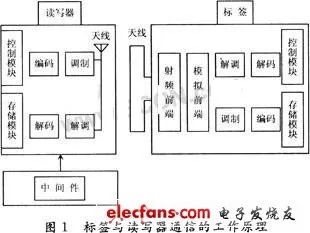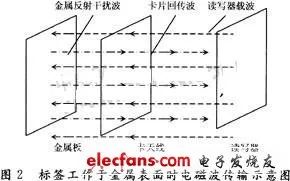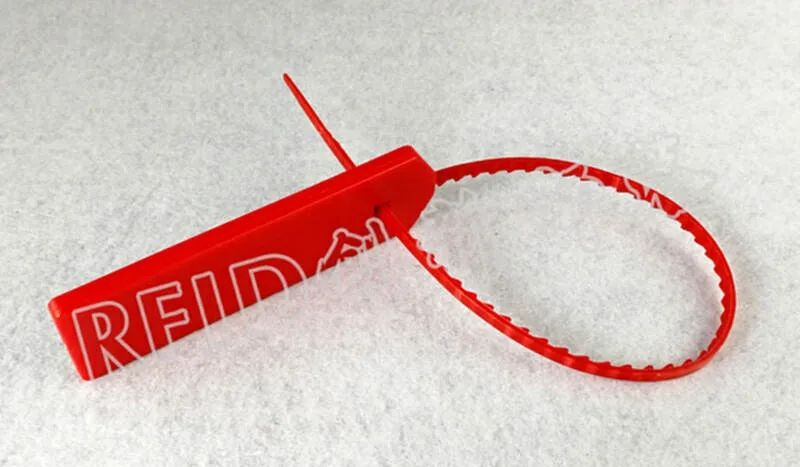
What are the applications of RFID in the container field?
[ad_1]
Radio frequency identification technology (RFID) is favored by the container transportation industry due to its fast identification speed, high accuracy, no contact, and strong environmental adaptability, and has been rapidly developed. He has gradually been used in transportation, air parcel management, logistics management, automatic production line control, access control management, material handling, medical care and other fields.
The application of RFID technology in the management of pallets, containers, transportation vehicles, etc., the identification of commodities and the overall management of the supply chain have promoted the development of the logistics industry.Electronic tags have the characteristics of long reading distance (generally within 20 m), suitable for harsh environments, strong penetrability, and recognizable moving targets.

The application of RFID technology in the container field makes it possible to accurately control and track the who, where, and when information of the container. Electronic tags for containers mostly use ultra-high frequency (UHF) segments.This frequency band has strong penetrating ability and shows superiority in dynamic reading[1].Compared with applications in industrial automation and other fields, the application of electronic tags in container logistics transportation has a strong particularity.RFID tags flow with containers at sea, docks, storage yards and other places. The working environment has the characteristics of large temperature difference, high ultraviolet radiation intensity, and sea water corrosive to the tags. The packaging of RFID tags for containers must consider these factors. At the same time, the reflection of electromagnetic waves from the metal surface of the container has a great impact on data transmission. Under the influence of the metal surface, the originally matched antenna becomes mismatched. It is necessary to redesign the antenna and perform impedance matching again.
RFID is a technology that uses radio frequency signals through spatial coupling (alternating magnetic field or electromagnetic field) to achieve contactless information transmission and achieve identification through the transmitted information.His core component is an electronic tag, which reads the stored information in the electronic tag through the radio waves emitted by the reader within a distance of several centimeters to several meters or even ten meters. Passive RFID tags convert the radio frequency energy sent by the reader into a DC power supply to supply power to the chip circuit. Figure 1 is a schematic diagram of the working principle of the communication between the tag and the reader.

Compared with applications in industrial automation and other fields, the application of electronic tags in container logistics transportation has a strong particularity.
Electronic tags flow with containers on the sea, docks, storage yards and other places, which is different from the ordinary electronic tag working environment. The following factors must be considered during label design and packaging:
· The particularity of temperature: the container working environment has high temperature, large temperature difference, and the operation is all-weather.
· High-humidity working environment: Most of the time during container transportation is done at sea (or in inland rivers), so the electronic tag must be able to work in an environment with a humidity of 35% to 80%.
· Strong ultraviolet radiation: Long-term, high-intensity ultraviolet radiation accelerates the aging of the label shell plastic.
· Acid-base corrosion and vibration shock: Most of the time, the container is working at the dock and sea. This environment requires the label to be resistant to acid and alkali corrosion, and the packaging structure and materials must be resistant to vibration and shock.
Due to the fast circulation of containers, container information must be able to be accessed from a long distance. Therefore, the identification speed of electronic tags is required to be high (moving speed>100 km/h), long distance (>6 m), high accuracy rate (>99%), etc. .
Ordinary RFID tags are directly attached to the metal surface. Due to the reflection of incident electromagnetic waves on the metal surface, strong electromagnetic waves in the opposite direction will also pass through the electronic tag. After the incident wave and the reflected wave are superimposed in phase, a part of it will be offset, and the intensity will be greatly weakened, which will seriously affect the reading distance of the reader to the RFID tag, and even the data on the RFID tag cannot be read, as shown in Figure 2. At the same time, the magnetic flux generated between the reader and the RFID tag will induce eddy currents on the metal surface. According to Lenz’s law, the eddy currents have a reaction to the magnetic field of the reader, causing the magnetic field on the metal surface to be strongly attenuated.

The solution to eliminate the influence of the metal surface of the container is to increase the relative height of the antenna and the metal surface.As the relative height increases, the composite field signal vector will gradually increase. When the relative height reaches 1/4 of the wavelength, the composite field signal vector reaches the maximum and a gain of 3 dB can be obtained. When the RFID tag is attached to the metal surface of the container, the distance between the tag and the metal surface is very small, and the space that can be raised is limited, which cannot meet the requirements. For example, the 1/4 wavelength of a 900 MHz radio frequency is approximately 8 cm, while the actual depth of the groove on the outer surface of the container is only 2 cm. It is necessary to insert an isolation medium between the ordinary electronic label and the metal surface, according to the wavelength formula of electromagnetic waves in the medium:

Among them: λ0 is the free space wavelength, μ and ε are the permeability and permittivity of the medium, respectively.
The usual practice is to encapsulate the isolation medium and the electronic label into a whole, thereby forming a metal-proof electronic label. The research that needs to be done includes medium research (medium selection, test and process determination, etc.), data analysis of specific medium parameters (μ, ε, etc.), and the choice of packaging form.
The characteristics of the tag antenna are affected by the shape and physical characteristics of the identified object, the distance between the tag and the labeled object, the dielectric constant of the labeled object, the reflection of the metal surface, and the parameters of the isolation medium.Therefore, when an ordinary tag is attached to the metal surface of the container, the originally matched antenna is no longer matched, and the antenna needs to be redesigned to determine the antenna geometry and size.The antennas of UHF RFID tags are generally long and label-shaped, and the antennas have two designs: linear and circular polarization.[2], To meet the needs of different applications.

The size of the ordinary electronic tag antenna is extremely small, butThe large area of the container body relaxes the requirements for the size of the electronic tag antenna. At the same time, the design of the antenna must consider the influence of the aforementioned isolation medium.The goal of antenna design is to transmit the maximum energy in and out of the circuit. The higher the degree of antenna matching, the better the antenna’s radiation performance. This requires careful design of the antenna and free space and chip circuit matching. The electronic tag antenna of UHF wave frequency band generally adopts the form of microstrip antenna. In the traditional microstrip antenna design, we can control the antenna size and structure, or use an impedance matching converter to match the input impedance to the feeder. However, the impedance of the electronic tag chip generally presents the characteristics of strong inductance and weak resistance, and it is difficult to measure the accurate impedance characteristic data under the working state of the chip. Its input impedance, directional pattern and other characteristics are easily affected by the processing accuracy and the purity of the dielectric plate. While maintaining the antenna performance, matching the antenna with the chip and taking into account the influence of the metal surface of the container is a major difficulty in the design of the electronic tag antenna for the container.In previous studies, it is generally believed that the matching between the antenna and the chip can be achieved by using a broadband antenna[3].
(1) Because the RFID tag chip is tiny and ultra-thin, the method used is flip chip (Flip Chip) technology, The automated assembly lines all use roll-to-roll production methods, and the process includes substrate feeding, gluing, chip flip-and-placement, thermo-compression curing, testing, substrate receiving and other processes. It has the characteristics of high performance, low cost, miniaturization and high reliability. However, the process equipment is expensive, and generally requires the use of equipment from foreign manufacturers to proceed.
(2) Another packaging method is to first divide the bonding and packaging of the chip and the antenna substrate into two modules.One of the specific methods (Chinese patent) is: the large-size antenna substrate and the small substrate connected to the chip are manufactured separately. After the chip is mounted and interconnected on the small substrate, it is connected to the large-size antenna substrate through the large pad. The adhesion completes the circuit conduction. The method uses an independent chip transfer device that can be precisely positioned to place the chip on a carrier tape to form a chip module, and then transfer the chip module to the antenna substrate. The advantage is that the two transfers can be performed independently and in parallel.
At present, flip-chip technology is a relatively mature label packaging technology. This packaging technology has the advantages of simple packaging procedures, mature technology, low cost, and small size, ultra-thin, and easy-to-stick labels.Most of the common labels on the market use this process. But this kind of equipment is expensive, and there are currently very few domestic manufacturers capable of flipping. Mostly, the second method is used, where the chip and the antenna are precisely welded to achieve the purpose of connection. Compared with the first type, this technology has much lower requirements for equipment, but the packaging process takes a long time.

In practical applications, the packaging size and form of most labels are restricted by the label object. Generally, the label should be small and thin, and can be re-packaged into a card.However, the surface area of the container is very large, which relaxes the requirements for the surface area and volume of the label. This is very beneficial to the design of the tag antenna. Because of the limitation of the volume of the marked object in many cases, the volume of the tag is required to be small, and its sensing antenna must be small. In the same field strength, the electric energy induced by a small antenna is much weaker than that of a large antenna.The reading distance required for dynamic reading of electronic tags for containers is relatively long (about 10 m), so the requirements for antenna size are higher, because smaller antennas show higher field strength when they are very close to the reader , And the field strength of larger antennas at longer distances is still higher[4]. Therefore, the electronic label for the container can be made larger, and finally packaged into a box shape and fixed on the surface of the container. It does not need to be made of flexible, paper, and stickable.
According to the actual needs of the electronic label to identify the container, the paper label made by the flip-chip technology cannot meet the requirements of anti-vibration, anti-corrosion and other aspects of the working environment of the container, and there is no need to package the label with a thin volume., In view of the domestic packaging technology level, TSSOP packaging can be performed on the chip before the chip and the antenna are welded, and the required pins can be drawn. On this basis, the use of Chinese patented technology to realize the interconnection of the chip and the antenna, in this process, the chip package and the bonding package of the antenna substrate are divided into two modules to complete. Then the medium is filled and the shell is sealed, and finally the finished electronic label of the container is made, and it is subjected to high-temperature aging, testing, and packaging. In this process, the use environment has considered the requirements of metal surface reflection, waterproof, moisture-proof, anti-fog, and anti-lightning strikes.
After TSSOP packaging the chip, the pins are bonded to the antenna, which solves the problem of the high price of inverted packaging equipment and the dependence on foreign technology.And compared with the previous two types of packaging labels, the TSSOP packaging material has the characteristics of compression resistance and high temperature resistance, which can meet the higher requirements of the container working environment and improve the reliability and stability of the label. Compared with the flexible packaging, the packaging of the entire label solves the problem of the influence of the label on the container metal due to the medium filling. The sealed shell can meet the requirements of large temperature difference, high humidity, strong acid-base and salt spray corrosion, and large vibration shock.
At present, my country’s radio frequency identification technology is still in its infancy.The application of RFID technology to the container industry has a very optimistic prospect, but the application of electronic tags in the container industry has great particularity.Through research, this article elaborated on many issues that should be considered in antenna design and impedance matching in the case of metal surface interference, pointed out his design direction, and explained that the packaging of electronic tags can break through the packaging form of traditional electronic tags, and choose a suitable one. The packaging of the container application environment solves the problem of metal surface interference by filling dielectric materials. As the electronic tag technology matures, its application areas will continue to expand. Not long after, the moving container vehicles can tell the traffic management system their specific location. When a fully loaded freight train passes, the sensor on the roadside will display The type, quantity, etc. of the cargo loaded in the vehicle.
[ad_2]



